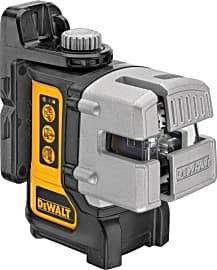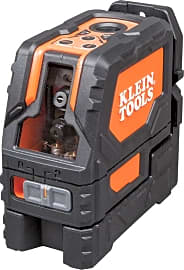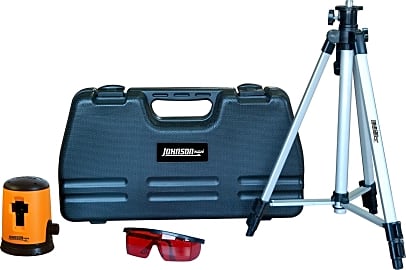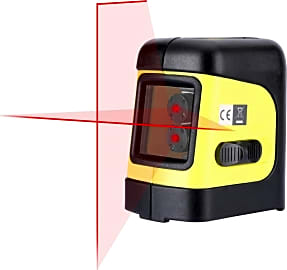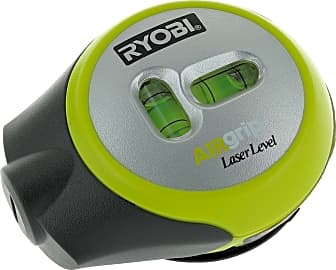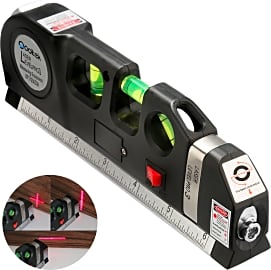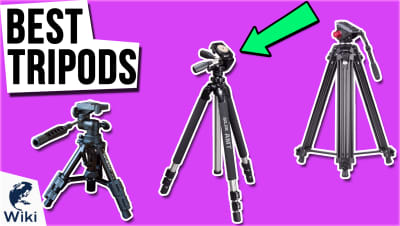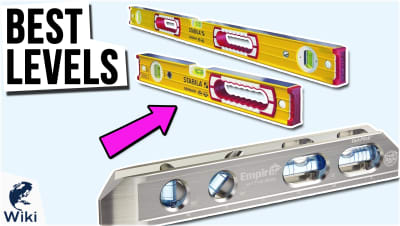The 10 Best Line Lasers

This wiki has been updated 45 times since it was first published in April of 2015. Whether you're taking on a project as small as hanging a picture or as large as building a skyscraper, you'll be glad that you have one of these laser levels to help line things up. Our selections for this category include everything from budget-friendly options that are nice to have around the house to top-end models with self-leveling technology that emit multiple beams. When users buy our independently chosen editorial picks, we may earn commissions to help fund the Wiki.
Editor's Notes
April 22, 2021:
Most of our picks from last year were still holding up pretty well, so we didn’t find a lot of reason to make significant changes to this list, but we did notice the Skil 8201-CL – a wallet-friendly model that we’d included at the bottom of our list for the benefit of budget-conscious DIYers – wasn’t available at the time of this writing, so we went ahead and switched it out with an alternative that’s even more affordable, though, albeit, significantly less capable.
While the 8201-CL offered four projection modes (much like many more-expensive models) and came with a serviceable tripod, our new pick – the Ryobi ELL1002 – only emits a single beam. It also offers a notably short range of 30 feet and a notably poor tolerance for error of 1/2 inch per 16 feet.
So, considering all this, why did we decide to list it? Well, for one thing, its rock-bottom price definitely helped its cause — you can buy this one twice over before getting into the price range of our budget picks, and 10 times over before you start price matching our top selections. Cost alone is never a good enough reason to make it onto one of our lists, but in a case like this, where an option is so affordable that it makes itself available to many users who otherwise wouldn’t have considered the purchase, it is something worth considering.
However, the way the ELL1002 really got our attention is with its inclusion a miniature, integrated air compressor, which makes it easy to attach it to any non-textured wall (using suction). This laser is not the tool for a contractor looking to line up a deck or drop ceiling, but, for a homeowner hoping to hang a shelf or picture frame, we thought it just might do the trick, and without breaking the bank. With all this in mind, the ELL1002 clinched a spot at the bottom of our list.
Line lasers are great for big projects where re-leveling is a guaranteed headache and a likely catalyst for inaccuracies, but for small jobs where you can afford to spare a hand, you might find that your life is made a lot simpler (and more affordable) with a basic level. If dealing with the bubbles drives you crazy, we’ve even got a separate list of digital levels that might appeal to you.
January 21, 2020:
During this round of updates, due to availability issues, we eliminated the Hammerhead Compact, Pacific Laser Systems 3-Point and Bosch GLL 3-80. To replace them, we introduced the Klein Tools 93LCLS – a durable offering from a company known for exceptional quality, the Huepar 603CG – a reasonably priced top-end option that’s suitable for contractors, and the Bosch GLL3-330CG – an excellent, though expensive, model that can be controlled remotely via Bluetooth through the company’s proprietary app.
Some things to get straight before making a purchase in this category:
Laser Range: While all of our selections should be suitable for lining up basic projects, indoors, at a close distance (like hanging up a picture or installing some new shelving in a pantry), some lasers are too dim to be easily visible in direct sunlight, making outdoor projects impractical and larger outdoor projects virtually impossible.
Since the spectrum of light created by green lasers tends to garner better visibility in bright areas, top-end models like the Huepar 603CG and Bosch GLL3-330CG – which employ class-two green lasers – tend to be better choices for outdoor projects. The Bosch boasts a particularly impressive range of 330 feet, making it a great choice for large projects.
Laser Orientation: On the basic end, any decent model should have at least three operating modes to choose from: horizontal beam – which comes in handy when installing a drop ceiling, vertical beam – which is useful for keeping studs plumb, and cross beam – which can be a real lifesaver when it comes to laying out complex tile patterns.
At the top end, models like the Bosch GLL3-330CG and Huepar 603CG (which I realize I bring up a lot in this editor’s note, not by coincidence but because my personal experience found them both to be an absolute joy to work with, and I can’t say enough good things) emit three, 360-degree, self-leveling laser beams (one horizontal, two vertical) that make quick work of squaring off a room.
Your laser range and orientation are the two factors that will most limit the versatility of your tool, and can make the difference between a this-is-unbearably frustrating experience and a this-is-unbelievably-convenient experience. Unfortunately, this can be a real get-what-you-pay-for kind of category, so if your budget allows for it and your needs suggest that it would be a good idea, put some serious thought into investing in a higher-end model.
Mounting Options: Nothing's more nerve racking than watching an expensive instrument, shimmed up by a teetering stack of scrap plywood and off-cut lumber, just waiting to get bumped and roll down to its untimely demise (although there are robust models available, like the Klein Tools 93LCLS, that have been one-meter drop tested). To avoid this unnecessary stress, consider an option that provides you with ample mounting options. The Klein Tools 93LCLS, in addition to its integrated, magnetic mounting bracket, comes with a mounting clamp for ceilings, while the Johnson Level and Tool 40-0921 comes with its own tripod.
Special Honors
LAP Lasers Portable models like the ones featured on this list are great for professionals working in the trades, but for production work in a factory setting, you're likely to be better off with a permanently installed fixture, like the ones offered by this company. Headquartered in Germany, their hardware features and IP67 dust and water resistance and offers a 30,000-hour service life. lap-laser.com
Milwaukee 3632-21 When loaded up with a fully charged four-amp-hour battery, this cordless model offers 15 hours of runtime. Its 125-foot working radius can be extended to 165 feet with the use of a laser detector, and it's accurate within 1/8 inch from 33 feet. Being one-meter drop tested and having both the tool and battery backed by a three-year warranty doesn't hurt, either. milwaukeetool.com
Choosing A Fine Line Laser
And indeed, they definitely can be, but that isn't always the case.
Line lasers convert the energy from a battery into concentrated, optically amplified light using a laser diode. The powerful beam this diode creates is passed through a cylindrical lens, which focuses the laser into a long, straight line. All of that might seem complex and might lead one to assume line lasers are expensive devices. And indeed, they definitely can be, but that isn't always the case.
Any line laser worth consideration protects both horizontal and vertical lines. These two axis options can be used independently, helping you keep rows of flooring straight or frames level in the horizontal application, and helping you to align beams or sheets of drywall vertically, for example. Using both a line laser's horizontal and vertical beams at the same time is perhaps the best use of the tool, however, the beams working in concert allow for perfect right angle measurements and can reveal even minute imperfections in framing, wall construction, and more.
Make sure the line laser you consider has a self-leveling capability. After all, if your line laser isn't leveled, there's no way the work you do using its beams as a guideline will be level either. This self leveling mechanism is usually controlled by an internal pendulum and a series of magnets and it precludes the need for a person to trust their own eyes (and hands) using a bubble level.
Many line lasers come with adapters that allow them to be attached to pipes, beams, or other surfaces; others are designed to be placed on tripods. The type of work for which you will use your level (plumbing, framing, or tile installation, for example) will help to dictate which type of line laser attachment method will work best for you.
Calculate your tolerance for slight inaccuracies and weigh that against the cost of a line laser. For example, a less expensive option might be accurate to within 5/16" at forty feet, while a pricier and more refined model will boast accuracy of closer to 2/16" at that same distance.
Using Your New Line Laser
The setup and use of a line laser is pleasantly simple. Attach the unit to the chosen surface, be it a pipe, a wall, or a work bench, or else place the line laser on the ground and then turn it on. Now give your line laser several seconds to self correct until it is projecting a level line. Once the beam is stable, you can commence your work.
Some line lasers come with a pair of laser viewing eyewear, but if your kit did not include these glasses there's no need to worry, they can be had quite affordably.
One of the best ways to ensure your work stays level and ordered is to mark surfaces using a pen, pencil, or chalk. Once you are confident you have the lines and angles you need to follow properly established by using your line laser, drawing the lines out on the wall or floor ensures that even if your laser is bumped or jostled, you will still have the benefit of its measurements. This can also allow you to turn the laser off, saving its battery and reducing the chance for an unpleasant accidental shining into your eye.
A line laser is an invaluable tool for laying a patio or preparing a walkway or driveway; its beam can help you determine when your materials are on the right plane and at a proper pitch relative to the design and function of the space. However, using your line laser outside or in brightly lit interiors may necessitate one extra step: the donning of specialized laser enhancement glasses or goggles.
The lenses of this specialized eyewear are tinted a specific shade of red that helps to make a laser's beam more visible even in bright conditions. Without such glasses, even powerful line lasers can be almost useless outside on a sunny day. Some line lasers come with a pair of laser viewing eyewear, but if your kit did not include these glasses there's no need to worry, they can be had quite affordably.
Creative Uses For A Line Laser
A line laser's primary function is to help you line up building materials to ensure you complete a proper looking and safe construction project. But they are also great tools for interior decorating. In this capacity, one ideal use of a line laser is well known and time tested: when you project a perfectly parallel line across a wall, you can use the line to figure out where you should insert nails or hooks for hanging picture frames.
Use your line laser to underline words or phrases on a banner or a sign, or to demarcate the dance floor at a party, for example.
A line laser can also help you with painting projects such as adding stripes of paint to a wall. Use the line laser to help you ensure the painter's tape you put up is perfectly straight and you avoid the chance for uneven stripes that you might not otherwise perceive until the actual paint is on the wall.
Line lasers can also help you check if pieces of lumber or moulding are warped, pointing out even slight bends that the human eye may miss. You can use one to inspect materials before they are installed or to see that an installation was done properly.
And finally, a line laser can be used to add a unique temporary decoration to a room or an outdoor space at night. Use your line laser to underline words or phrases on a banner or a sign, or to demarcate the dance floor at a party, for example. A line laser can help to indicate the direction to an exit or a restroom in low lighting conditions, or its beam can serve as a boundary line not to be crossed during an art gallery show.



